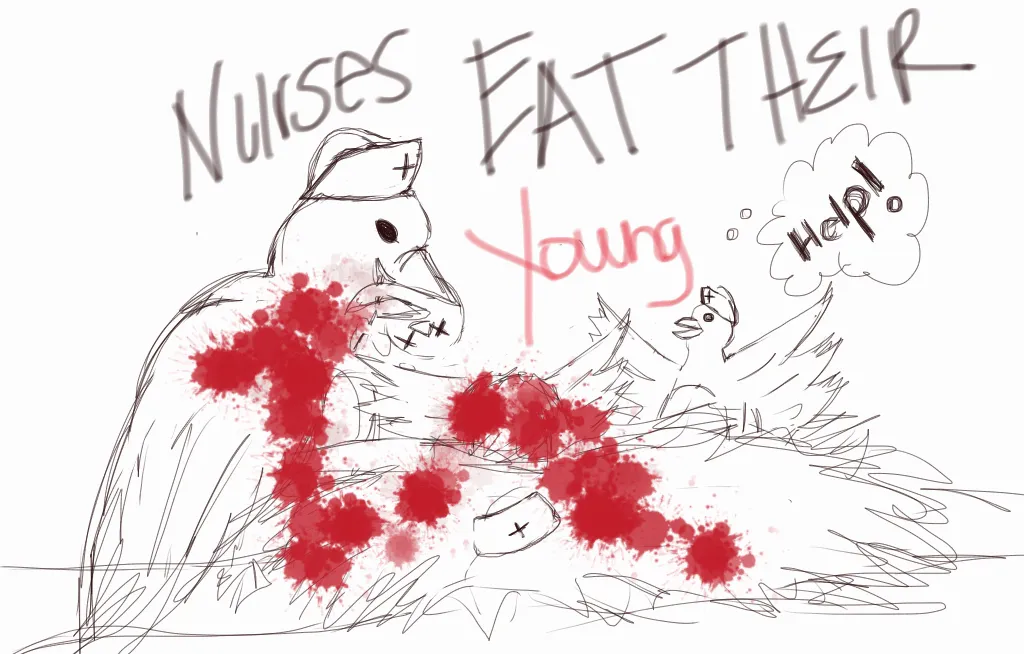Stress Journal of Nursing

Maladaptive Strategies and Self-Harming
Tags: bounderies maladaptive strategies self harming behaviors self-harming strategy stress
Information technology has become an ocean of opportunity for people of all ages to engage and influence how others feel about themselves and what they are doing. Not understanding appropriate boundaries and how to set them along with unhealthy coping mechanisms have left many people incapable of adequately dealing with a tsunami of criticisms. Unhealthy coping strategies increase the risks for self-harming behaviors.
Read More →
Fostering Sound Relationships in Nursing Education Through Faculty and Student Mentoring
Tags: ethical principles ethics mentorship nursing ethics nursing faculty nursing students perioperative stress students violence
This article will provide a brief review of the literature on the benefits of effective mentoring such as improvement in the confidence level of novice nursing faculty members that leads to success as a teacher. This article will also provide an overview of some types of mentoring programs currently available. Further, this article will examine the importance of mentoring as it relates to enhancing the student-faculty relationship. Lastly, this article will examine ethical standards and the faculty member's role in promoting a just culture between the student, their peers, and the faculty member in the learning environment.
Read More →
Nurses Eat Their Young; An Insight Into Systematic Hazing and its Implications on Patient Care
Tags: bullying hazing nursing nursing students patient care stress student nurse
I am a nursing student that worked as a CNA for six years. I was inspired to write this from my own experiences that I have encountered while working in the field of nursing.
Read More →
What Are The Effects Of Floating to Nurses And Patient Care
Tags: float nurse Floating floating nurse floating nurses policy implications of float nursing floating policy Rapid Response stress
This article will explore how floating affects nurses and what management can do to help nurses relieve the stress, anxiety, and dissatisfaction of the nurses with the health care system.
Read More →
Health and Wellbeing: A Student Nurse's Perspective
Tags: assertiveness health mental health Nurse Education stress student nurse students undergraduate wellbeing
This essay discusses health and well-being as multifaceted concepts and explores how my health and wellbeing has been affected since becoming a student nurse. This essay also discusses the importance of maintaining good health and wellbeing in relation to self-care and patient care.
Read More →
I Will Not Die But Live!
Tags: advanced practice advice advocacy advocate bullying child culture depression emergency emergency department Emergency nurse Emergency Nurses heart attack investigation love medication mental health patient safety stress treatment Whistleblowers work environment wound care
Since leaving nursing in 2008 I have wanted to write about my experiences as an emergency nurse and what happened to me as a whistleblower. This is my story.
Read More →
When "Old Dogs" go Back to School
Tags: Bachelor's degree education family nursing leadership PACU stress
I went back to college at the age of 62. Being an "old dog", I was not computer savvy, so taking classes mostly on-line was quite challenging. I believe that my trials and triumphs evidenced in this article, will encourage nurses, especially older nurses, to go back to school for their BSN.
Read More →
Disparities in Healthcare: Night Shift Nurses
Tags: health issues night nurse night shift nursing ethics Sleep deprivation stress
Night shift nurses have been shown more likely to developing health issues than their day shift counterparts. Research over the past twenty years has led to the increasing conclusion that working night shifts for as little as eight shifts a month is associated with an increased likelihood to develop metabolic syndrome, a four-fold increase in the incidence of vascular events, and an increased chance of developing certain cancers.
Read More →
Recognizing Heart Disease As a Women's Disease
Tags: female diseases heart attack heart disease risk factors stress womens disease
There are noted differences among heart disease signs between men and women. Coronary Heart Disease can go unnoticed in women until they actually suffer a heart attack (NIH). Thus it is essential women are aware of the signs and symptoms, risk factors and healthy life style choices to prevent the devastating effects of heart disease. .Seeking early treatment when symptoms present is vital in improving the outcome of heart disease. It is important to teach women how to incorporate prevention strategies such as: consuming a healthy diet, maintaining optimum weight, maintaining an active lifestyle, maintaining both normal blood sugar and blood pressure levels as well as avoiding risk factors such as smoking, drinking alcohol limit their stress and any unhealthy behaviors that can lead to heart disease. Advocating for women and promoting education regarding health issues affecting women needs to be a priority so heart disease in women can be prevented and effectively treated.
Read More →
The Cost of Caring
Tags: caregiver caring Case Study cost stress students
Nurses care for individuals when they are most vulnerable and often serve as emotional outlets. It is this deep caring that can lead to nurses becoming burnt out or developing vicarious traumatization, secondary traumatic stress, or compassion fatigue. Awareness of these phenomena and methods of prevention needs to be increased throughout the profession. This includes teaching nursing students as they begin having interactions with patients in the clinical setting.
Read More →
Let’s get rid of the “bad apples”
Tags: behavior bullying Incivility Lateral Violence leadership nursing leadership organizational Intervention stress violence
One of the most stressful challenges of the nurses working environment has become working among our own colleagues. Terms such as “Incivility”, “Bullying”, and “Lateral Violence” are now included among our long list of stressful issues nurses face each and every day. These terms include behavior that is undesirable for any institution and is counterproductive in any environment. Undesirable behaviors can involve not only nurses but any employee in an institution including that administration. The effects it has on nursing can be detrimental to the entire profession and even cause many to leave the profession of nursing altogether. We must begin to address this issue with specific interventions and we must do it now for it can and will taint the image of nurses who are smiling at work, providing caring, compassion, and good rapport with their fellow colleagues and have an investment in the organization to do well.
Read More →
Remember When We Were Nursing Students
Tags: clinical clinical rotations nursing school nursing students stress student students violence
I remember, as most nurses can, their days in nursing school, feeling anxious and scared going to clinical rotations to take care of real living patients and not just the mannequins in the lab. Most us can also recall how the floor nurses treated us as students engrossed in our clinical rotations. There were nurses who made a positive impression on us and unfortunately there were nurses who did not make a positive impression. Terms such as “Incivility”, “Bullying”, “Vertical Violence” and “Internal Violence” have become too familiar in today’s nursing literature. As an Associate Professor of Nursing, it is a shame to have to include such terms in nursing lectures and worse of all trying to explain reasons this may be happening among nurses and just may happen to them as nursing students. According to Luparell (2011) “Because today’s student are tomorrow’s colleagues, conversations regarding incivility and bullying should include specific aspects of nursing academia and the preparation of new nurses”.
Read More →
Cortical Dynamics as a Therapeutic Mechanism for Touch Healing
Tags: behavior stress therapy Touch Healing
Touch Healing (TH) therapies, defined here as treatments whose primary route of administration is tactile contact and/or active guiding of somatic attention, are ubiquitous across cultures. Despite increasing integration of TH into mainstream medicine through therapies such as Reiki, Therapeutic Touch,™ and somatically focused meditation practices such as Mindfulness-Based Stress Reduction, relatively little is known about potential underlying mechanisms. Here, we present a neuroscientific explanation for the prevalence and effectiveness of TH therapies for relieving chronic pain. We begin with a cross-cultural review of several different types of TH treatments and identify common characteristics, including: light tactile contact and/or a somatosensory attention directed toward the body, a behaviorally relevant context, a relaxed context and repeated treatment sessions. These cardinal features are also key elements of established mechanisms of neural plasticity in somatosensory cortical maps, suggesting that sensory reorganization is a mechanism for the healing observed. Consideration of the potential health benefits of meditation practice specifically suggests that these practices provide training in the regulation of neural and perceptual dynamics that provide ongoing resistance to the development of maladaptive somatic representations. This model provides several direct predictions for investigating ways that TH may induce cortical plasticity and dynamics in pain remediation.
Read More →
Literature Review: Safe Nurse Staffing
Tags: Competent Care float nurse float pool Floating floating nurse health ICU medication errors nurse Nurse and Burnout nursing ethics patient outcomes performance retention Staffing Issues stress Stress among Nurses work environment
The purpose of this literature review is to exam nurse staffing and staffing related issue and its impact on the healthcare world. Safe nurse staffing poses substantial issues at the clinical level including its tremendous impact on patient mortality, patient satisfaction, increased incidence of medical errors, and nurse dissatisfaction and burnout.
Read More →
Clinical Profiling: Natural History of Essential Hypertension
Tags: clinical profiling essential hypertension health care Manuscript risk factors stress
Hypertension is a major cardiovascular risk factor that directly contributes to myocardial episodes such as abnormal wall motion, hypertrophies, and subsequently an infarction (MI). Also noted, are cerebrovascular accidents (CVA), congestive heart failure (CHF), peripheral arterial insufficiency (PAI), and premature mortality. Optimal and cost-effective management of the condition depends on careful diagnosis, treatment minimization, and optimized adherence to the selections of tests and treatment plans.
Read More →
Distress and Depression Among Bone and Marrow Transplant Patients
Tags: BMT cancer patients chemotherapy depression distress patient care stress therapy treatment
Bone and Marrow Transplant (BMT) is a five step treatment process: screening, collecting, conditioning, infusion, and engraftment. Bone and marrow transplant treatment is very aggressive that creates significant physical, social, psychological, and emotional stress. During the treatment process, many BMT recipients experience and display a wide array of psychosocial disorders including distress, anxiety, and depression. The way an individual experiences and copes with the distress, anxiety, and depression contributes to the physiological, psychological, and psychosocial outcomes of BMT treatment.
Read More →Get Published for Free
Browse by Tag
advocate aging anesthesia behavior cancer cardiac care Case Study child children clinical COVID-19 critical care death diabetes disease education emergency department end of life ethical principles ethical values ethics graduates health health care ICU medication mental health nurse Nurse Education nursing nursing ethics nursing faculty nursing school nursing students PACU patient care patient outcomes patient safety pediatric pediatrics poem risk factors stress student nurse students teaching therapy treatment violence
Most Popular Last Month
More from RN Journal
Tourette’s Syndrome: Implications for a Moving Disorder
Amongst the Angels
Memories from a Haitian Cholera Treatment Center
A Valuable Lesson on Loss
Sickle Cell Disease
Not Just Another Day
Ethics Exemplar
"Just a nurse"
Love hate relationship in nursing









